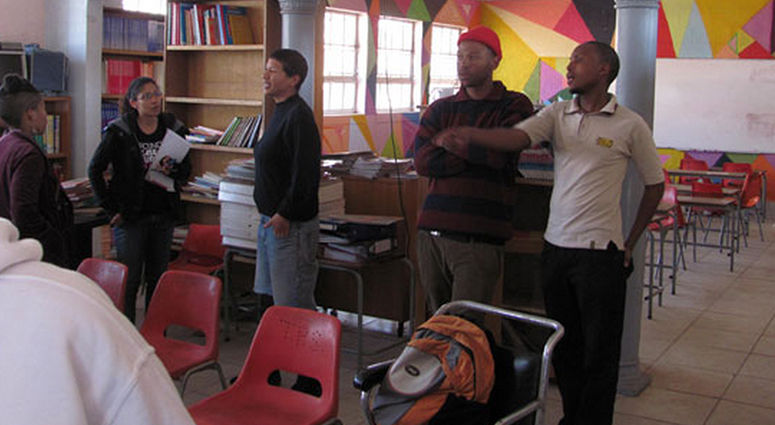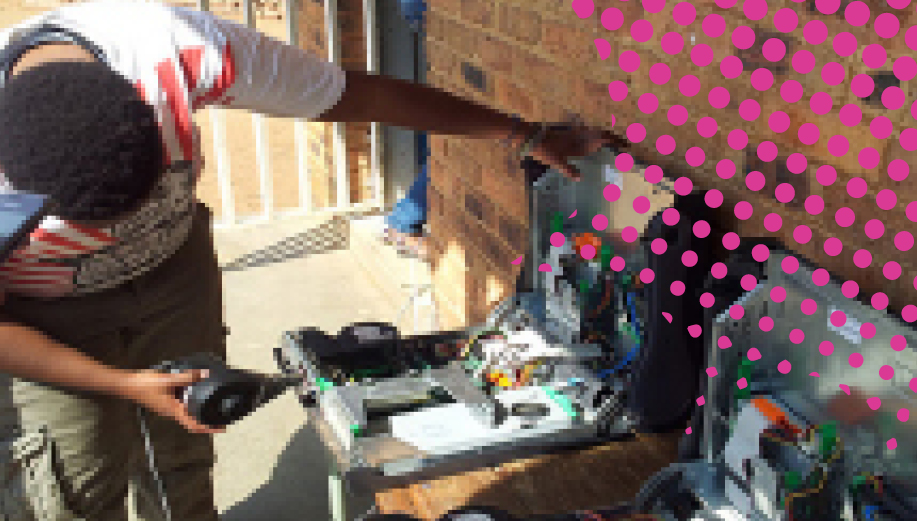10% to Community | Design Intervention for Social Upliftment

09.04.2015 Features
Students in South Africa today are among the first to study in a post-Apartheid climate, representing a new generation of youth who did not, at some point, live through a segregated school system. Our impression at the ico-D Open Forum in Johannesburg, was that there are significant differences between the current student body and students studying pre-1994, and that the response to the socio-cultural shift in SA has inspired a need to make educational institutions and programmes more reflective of a civic order that favors transformation through unity.
ico-D: How has design education evolved and played a key role in creating a generation of thinkers who are able to cope with the new realities in South Africa? Which new realities, in particular, are hot topics that students want to address and sink their teeth into?
Des and Ingrid: The changing understanding of what constitutes design and its role in society can be a tool for social “upliftment.” An initiative, undertaken by Greenside Design Center College of Design to include a community project in its curriculum is described in this article.
Nine years ago, Greenside Design Center’s management created an experimental educational community engagement programme, called 10%, partly in response to the Government’s call for higher education to have a greater impact on social transformation.
In 2009, this project, received the International Federation of Interior Architects/Designers (IFI) Design For All Award. This award recognizes excellence in design in the service of humanity. This award marked the beginning of spreading the idea of design intervention in the interest of the under privileged beyond South African borders. The 10% website aims for a growing awareness of the idea of design intervention for social good and provides valuable digital resources ofr other institutions to use.
"10% involves students and lecturers spending 10 per cent of the academic year, which equates to approximately four weeks, on community projects involving design intervention."
Students are encouraged to listen to, and record, community peoples’ problems and their ideas as to solutions rather than being enticed into a ‘we know better’ attitude. Each group of students presents their findings (including engagement with the community, their research and their final design solution) to the community and to the whole GDC student body and academic staff, so that it becomes a learning experience for all.
"The idea is that the design studio becomes a research laboratory for students and lecturers to address a specific community’s needs. The projects contained within the programme vary enormously - from designing community centres in under developed areas, to looking at how design can add value to developing children’s games, or even the lives of animals at the Johannesburg Zoo by improving the design of toys and structures."
The lecturers, as project leaders and participating designers, allow their groups to self-direct their research, design processes, and design solutions and in this sense, the projects offer exciting opportunities for students to develop their own research and design interests and also how to work in a team.

Another important aspect of this programme is that it tests the students’ ability to position solutions within the concept of social upliftment, in other words: produce design solutions as a means to improve the quality of life of the end user. This programme helps young designers understand that design is a complex, critical and reflexive cognitive activity that does not operate in isolation. Inclusion of all participants across the board is the key factor to success, especially in terms of meeting the needs of the client and designing accordingly.
"The premise is that the community engagement programme will produce designers who are capable of testing their design solutions against concrete problems, in other words, working on process and design solutions for the real world."
Because of the GDC’s interest in sustainable design, the projects are run over a few years to ensure enduring relationships with community partners. The research our groups generate is archived in our library to build up a resource for community based design work for future generations of design students and lecturers at GDC and other national or international institutions.

GDC usually runs eight projects for different communities within the four week community engagement period. Any student can bring a proposal to the institution which is then brought before the Community Engagement Committee, consisting of various academic staff from all disciplines, who evaluate and decide which projects are most relevant. This part of the process allows for any individual or group to bring proposals to the committee for approval provided that a community with needs has been identified. Once all eight projects are approved by the committee general briefs are written for each group and these are refined as each group is tasked to further identify needs of the given community.
"The Community Engagement Committee leads an inclusive process that starts with interviewing specific members of the community, particularly community leaders and others who are actively involved, to determine how, though collaboration, changes can take place."
Through this collaboration, the design students hone in on the needs of the community and identify problems that may be resolved though design interventions. Part of this process is to determine what resources are available and how these resources might influence design decisions based on the needs of the community. Generally, with projects of this nature, groups need to take cognisance of the fact that funding can be very limited and this can influence the kinds of design interventions that can take place. The groups are encouraged to look for sustainable design solutions by fine tuning the brief to suite the situation, which could inevitably mean sourcing materials on site or from close proximity when looking at their processes and solutions.
To sum up, the groups generate design solutions and models in collaboration with the community. They test these design solutions by doing continuous presentations, evaluations and peer reviews to community members and members of other design groups in order to see whether they are on track or not. Once all information is disseminated from discussions with the community and initial research is completed to determine possible interventions.
Read more

relatedarticles

goodbye! and next steps for colleague and friend alexey lazarev

explorations in ethical design: meditations on equality

RCA launches new programme: MA Digital Direction

Interview | Ermolaev Bureau (Moscow)
